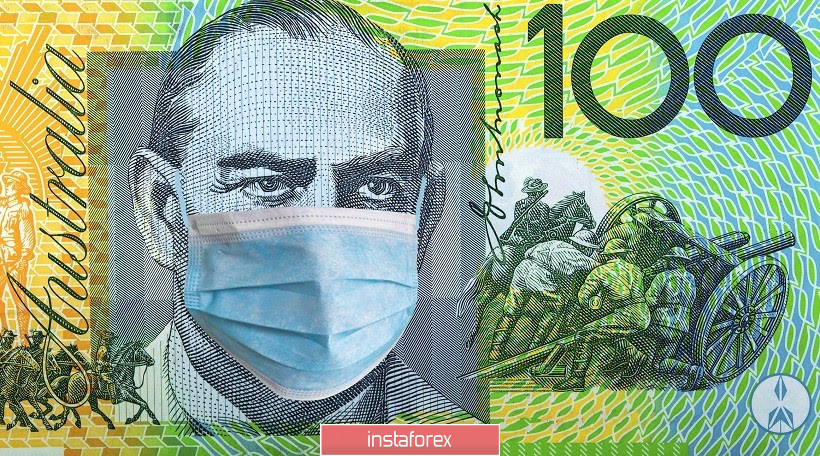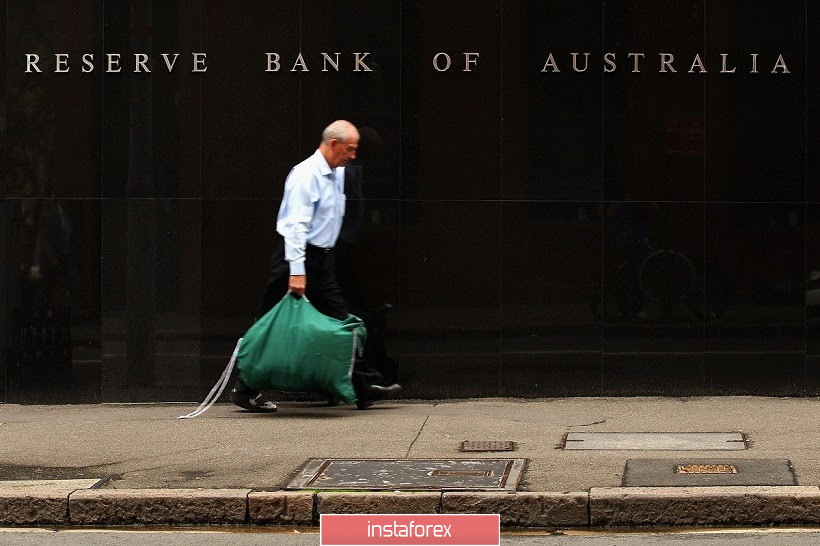The Australian dollar resumed growth against the US currency after a two-day decline to the support level of 0.6780 (the middle line of the Bollinger Bands indicator on the daily chart). The minutes of the last Reserve Bank of Australia meeting published today only strengthened the upward momentum of AUD/USD - the pair returned to the 69th figure, recalling their long-standing claims to the 70th price level.

The essence of the document published today boils down to the phrase "it could have been worse." By and large, the minutes expanded the theses already voiced by the head of the RBA, reiterating the position of the central bank. Let us dwell on the main points. First of all, the regulator virtually ruled out a further reduction in the interest rate - including in the negative area. According to the RBA members, the coronavirus attack was weaker relative to earlier forecasts - unemployment did not grow so much, while inflation indicators showed a relatively "tolerable" decline. Also, the RBA noted that the country left the lockdown earlier than expected (Australia gradually - from May to July - loosens quarantine restrictions), so the country has already begun restoration processes. For example, positive trends are observed in the field of consumer activity, in the labor market and in the field of industrial production. In other words, the RBA members hinted at a V-shaped economic recovery, which is consistent with the recently voiced position of RBA Governor Philip Lowe. In his opinion, the country will get out of the crisis in the second half of this year only if the second wave of the epidemic does not follow. It follows that at the beginning of next year, the central bank will consider the issue of raising the rate, although at the moment it is too early to talk about it.
Despite an optimistic attitude, the RBA also stated that "if necessary, the regulator is ready to increase the volume of bond purchases and take any measures to maintain debt markets as normal". The regulator also assured that it would not raise the rate until there was "steady progress in moving towards the target levels of full employment and inflation." However, these dovish formulations were also in the text of the accompanying statement. The market ignored these standard remarks, focusing, firstly, on maintaining a wait-and-see attitude on the part of the RBA, and secondly, on future prospects.
In general, the minutes of the RBA did not say anything new - but the general optimistic attitude helped strengthen the Australian dollar's success against the US currency, which was achieved solely due to a decrease in the dollar index. The AUD/USD pair is approaching the boundaries of a key resistance level, however, it will be very difficult to overcome this target.
Last week, the aussie tested the mark of 0.7000 several times - sometimes the pair's bulls even managed to temporarily enter the area of the 70th figure. But each time the bears seized the initiative, returning the aussie back home. The main problem of the growth trend is that the aussie is under the influence of the political conflict between Australia and China.

I recall that at the beginning of last month, Canberra called for an independent investigation of the causes of the spread of coronavirus. This proposal was supported by more than 120 countries, but at the same time it was received "with hostility" by the Chinese side. Beijing accused Australia of a political attack on China. Then the political conflict turned into an economic plane: China suspended the import of beef from the four largest meat processing enterprises in Australia and sharply increased the duties on barley. In addition, the Chinese ambassador said Chinese consumers could boycott Australian products if Canberra continued to insist on an investigation. Australian authorities are trying to resolve the conflict, but the Chinese side has not yet made contact: at the beginning of last week, Trade Minister Simon Birmingham, who has been proposing to hold talks on trade friction with the PRC for several weeks, said Beijing was ignoring his requests. Later, representatives of China increased pressure by urging Chinese students not to return to Australian universities "because of racist incidents."
Thus, relations between Beijing and Canberra remain tense until now. This fact puts background pressure on the AUD/USD pair given the fact that China is Australia's main and largest trading partner. Therefore, on the one hand, aussie retains the potential for its further growth - as we see, even a 200-point decline turned out to be a temporary correction, and not a turning point in the trend. But on the other hand, the US-Chinese political conflict could be a serious obstacle to the conquest of the 70th figure. Therefore, from current positions, you can consider purchases to the resistance level of 0.7000, however, when reaching this price area, you should be careful and not rush into trading decisions - until the above conflict has been settled, it will be difficult for buyers to gain a foothold above the 70th mark.





















